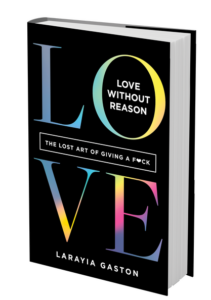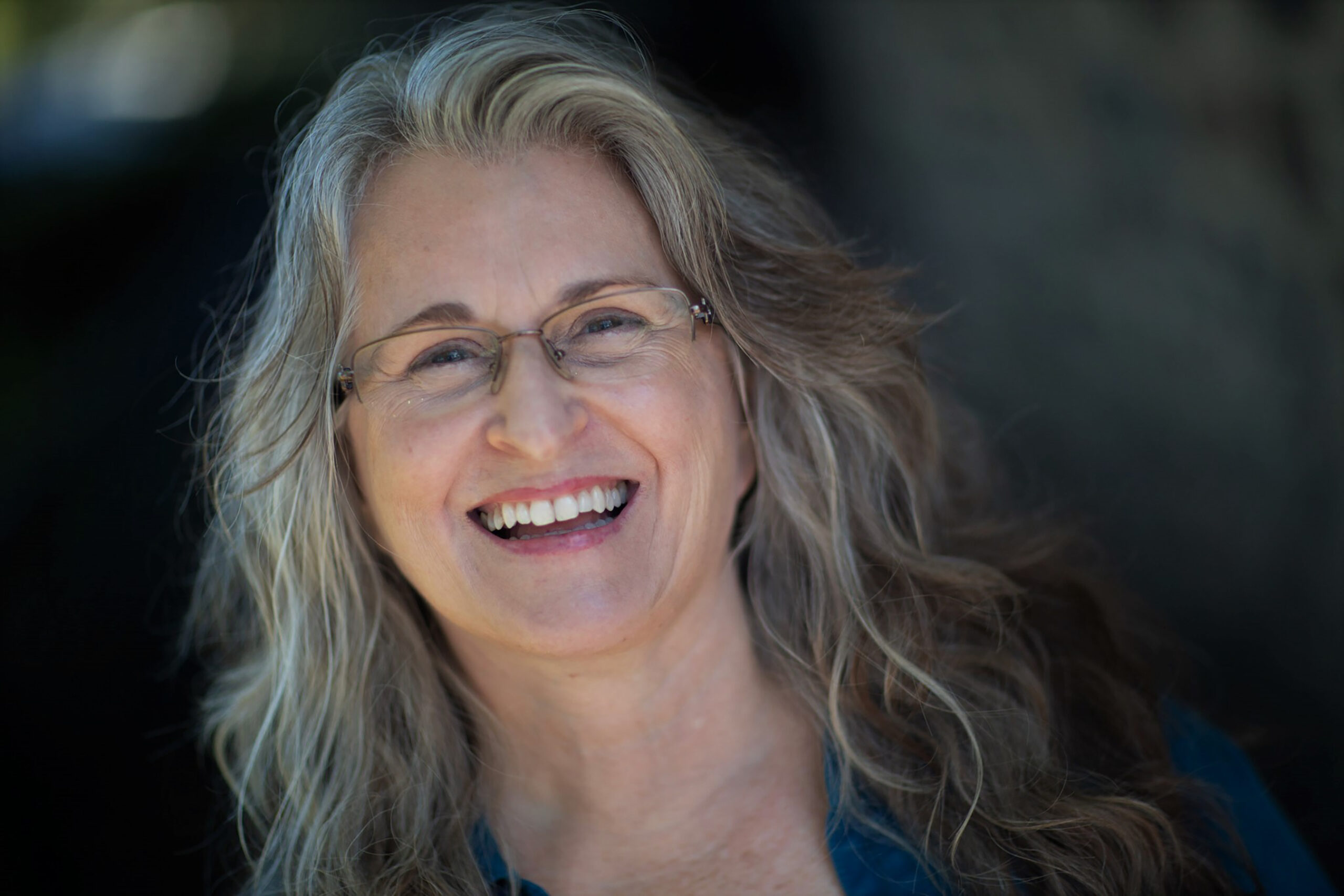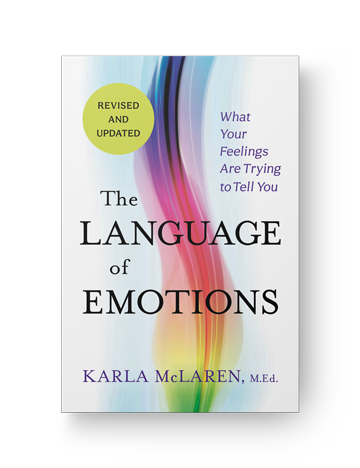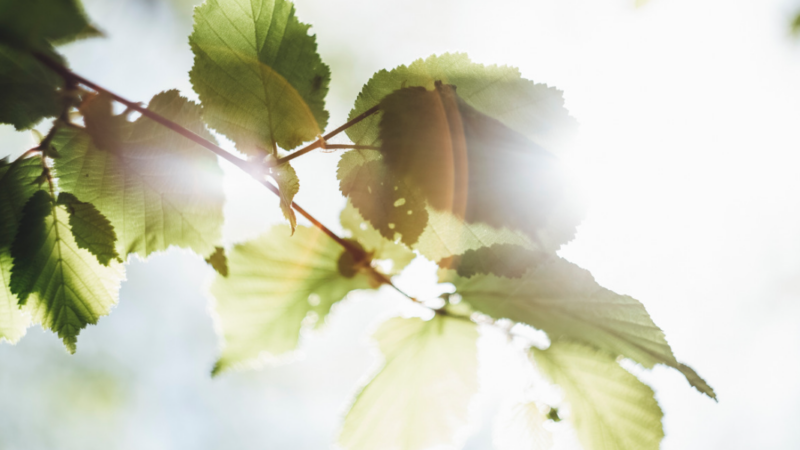Bedtime Visualization: Rocketing to the Moon

Bedtime should be the calmest moment of the day with our kids, but often it is anything but. Whether we are dealing with last-minute pajama changes, tooth brushing negotiations, or we’re trying to corral our kids into their rooms, it can end up being an exasperating time for both kids and parents alike.
There are many reasons bedtime can be hard. The first is that we are tired, and of course they are too, so no one is exactly ‘at their best’ at the end of the day. Another challenge for children is that they are about to say ‘goodbye’ to us for the night and that can bring up anxiety about being on their own. Also, let’s face it, falling asleep can be difficult regardless of age. The shift from active to rest is not easy; especially when you add a mind full of racing thoughts—which is typical for children (and adults) when things get quiet at night.
What is needed is a way to help children settle mentally and physically at bedtime. When they feel safe and at ease, falling asleep gets a lot easier. Guided visualizations are tools to support children in using their own imaginations to let their bodies and minds relax at bedtime.
The visualizations in Sweet Dreams: Bedtime Visualizations for Kids ,by Mariam Gates and illustrated by Leigh Standley, engage children in mini journeys to underwater worlds, a horseback ride through a field, and even into space while helping them naturally shift into relaxation. The fun and gentle exercises move them into a calm state which is essential for a good night’s rest. Each visualization is also short enough that it can be easily added as a ‘final story.’
We invite you to try the “Rocketing to the Moon” visualization from Sweet Dreams and see if it helps make bedtime a little smoother for everyone.
Lie down on your back and bring your legs together, pressing your arms tight against your body. You are a rocket ship going to the moon.
Start bouncing your legs to ignite the engine.
10 . . . 9 . . . 8 . . . 7 . . . 6 . . .
Now shake, shake, shake your whole body.
5 . . . 4 . . . 3 . . . 2 . . . 1. BLAST OFF!!!
As you launch into space, point your toes and make yourself as long as you can.
Take a DEEP BREATH IN and a LONG BREATH OUT. Relax your whole body as you sail through space. You are heading toward the moon.
All around you are bright stars and clusters of asteroids. It’s peaceful and quiet.
The moon is getting bigger and bigger the closer you get.
Thud. YOU HAVE ARRIVED.
Step out of your rocket. Bend and extend your legs to make big steps onto the moon like you are walking in slow motion.
You can see Earth in the distance. It is blue and green, like a jewel hanging in the dark sky. Take some deep breaths in and out and think about Earth and how beautiful it is. Think about how lucky you are to live on such a wonderful planet.
It’s time to climb back into your rocket ship.
Take another DEEP BREATH IN and a LONG BREATH OUT.
YOU ARE HEADING HOME.

MARIAM GATES has a master’s degree in education from Harvard University and two decades of experience working with children. She is the author of the bestselling Good Night Yoga series. Mariam likes to spend most days writing, where she can explore underwater depths, fly through the sky, and walk on the moon—all in the same afternoon! She lives with her highly imaginative family in Northern California. Learn more at mariamgates.com.

LEIGH STANDLEY is the artist, writer, and owner of Curly Girl Design, Inc. She creates art for greeting cards, calendars, journals, wall art, and more, and her art is sold throughout the U.S. and around the world. Leigh resides in Boston with her husband and twin little people. She can’t live without yoga, her family, Snickers, and Lucy the Wonder Dog. Leigh believes in magic and is quite certain that given a cape and a nice tiara she could save the world. Learn more at curlygirldesign.com.

Available at your favorite bookseller
Brené Brown on Embracing Vulnerability
“You cannot access empathy if you’re not willing to be vulnerable.” What a rich and evocative statement from our friend and Sounds True author Brené Brown. There is such a deeply-rooted pull to move toward those emotional-states that we identify as “positive” or “light” or “spiritual” – along with a counter move away from those “darker” or challenging and exposing emotions such as vulnerability, sadness, and grief. But, as Brené reminds us, vulnerability is the ground of all of the so-called positive emotional states, including those of love, joy, and belonging.
When we can allow ourselves to be naked, exposed, to be profoundly touched by whatever appears, we can meet this life – and the sweet, beautiful heart of another – in the most precious way. It is in this turning into the immediacy of our experience, in a truly embodied way, that we come to discover the many fruits of this sacred world. There are times, of course, when doing so is not easy, when it takes everything we have (and more), and feels completely counter-instinctual. But somehow, by some mysterious grace, we learn to stay with what is there, knowing that it has something very precious to show us about ourselves, and about the true nature of love.
If you are interested in learning more about Brené’s teachings and research in the areas of vulnerability, shame, and worthiness, you may enjoy her original audio programs with Sounds True:
The Gifts of Imperfect Parenting: Raising Children with Courage, Compassion, and Connection
Men, Women, and Worthiness: The Experience of Shame and the Power of Being Enough
The Power of Vulnerability: Teachings on Authenticity, Connection, and Courage
Enjoy the following video from Brené on the gifts of embracing vulnerability.
The Practice of the Imagination, with David Whyte
In this short video, poet David Whyte takes listeners on a journey into the nature and practice of the imagination. For David, while we ordinarily think of the imagination as the ability to think up new things, the poetic tradition sees the imagination as the ability in each of us to form a central image which provides a container for our own belonging. As we explore this image – and as it unfolds within us – we come to discover our innate aliveness.
David is the author of three inspiring audio learning programs with Sounds True:
When the Heart Breaks: A Journey Through Requited and Unrequited Love
Clear Mind, Wild Heart: Finding Clarity and Courage through Poetry
What to Remember When Waking: The Disciplines of an Everyday Life
Enjoy this short video with David on the practice of the imagination.
MINDFULNESS 24/7: 5 Simple Everyday Practices
 Mindfulness can be defined as the clear and calm energy of an intelligent alertness, spacious and awakening. The good news is it’s present all the time. It’s inherent in our human inheritance. We need only to remember this. Here are five simple everyday reminders for mindful living to try for yourself.
Mindfulness can be defined as the clear and calm energy of an intelligent alertness, spacious and awakening. The good news is it’s present all the time. It’s inherent in our human inheritance. We need only to remember this. Here are five simple everyday reminders for mindful living to try for yourself.
[You don’t need to take them on all at once. As you learn to incorporate each into your daily life, gradually, any one can be a model for all the others.]
1) BREATHE, YOU ARE ALIVE!—Conscious Breathing
Vietnamese Zen Master Thich Nhat Hanh, the grandfather of modern mindfulness, gives us this brief reminder to remember: “Conscious breathing is my anchor.” This thought stops me in my tracks. With breath now as basis of my awareness, I have returned to the present moment. Even when my mind might wander elsewhere, I can feel my breath in my body is in the present moment, my underwater anchor supporting my awakening mindfulness.
Allowing body, mind, and breath (spirit) to find each other helps me live fully. Paying attention to What Is, as it manifests right in front of my nose, lets me see things as they are, rather than through colored lenses of fantasy and personal cravings, invisible filters of cultural conditioning, and frames of ideology.
Conscious breathing doesn’t require taking a full breath, or any particular kind of breath at all. Rather, just being mindful of breath can amplify concentration which can, in turn, awaken full awareness. This can even lead to the cool, lucid plateau of meta-awareness: awareness of awareness.
See for yourself. Enjoy just three conscious breaths—right now!—and feel yourself solidly grounded in moment-to-moment awareness.
2) PAUSE—Intentional Conduct
To enjoy just one conscious breath means to pause. Pausing opens up a vital space. Between stimulus and unconscious reaction, I have space to discern how I might best wisely respond to what’s at hand. What can I do, right now, that could be harmful, and what might be beneficial? This too is spiritual practice, making evident my values via concrete action.
Throughout the day, I remember to pause, return to my breath, and check intention. A wonderful reminder is to smile. Aware of your breathing, notice what happens if you also give yourself the gift of a smile. Just a faint smile can help me realize I have enough reasons to be happy in the present moment. Earth beneath me, blue sky above, air in my nostrils—life itself! My smile also arouses my sense of taking responsibility, truly being author of my life, to live the life I was meant to live.
Plus, a smile can be contagious. Here is a fulcrum, so to speak, that can facilitate deep transformation. That is, to my intentionality I add relationality. It’s my intention for myself—and for others. I know my well-being is intertwined with the well-being of everyone else. We’re all in this together.
The Dalai Lama sometimes refers to his “selfish altruism.” That’s an honest way to view relationality. Who wants to live in a world where everyone’s depressed, burnt out, and close the edge!? I recognize I am not free unless everyone else is too.
To check how I’m doing, I use my life as the clear mirror of my practice. For instance, I look in the rear-view mirror of my actions. (I consider actions, by the way, as including thoughts and words, as well as deeds.)
As the East Bay Meditation Center reminds us all, there can be a difference between intention and impact. If my actions have good intentions but are triggering destructive emotions in others, it’s a good cause for engaging in self-examination as to what I still need to work through.
3) DEEP LISTENING—Awakening the Mind of Love
Now you know the three primary reminders I engage with in my everyday life: breathing, smiling, pausing. From that base, I am glad to offer three more.
Living in an Information Age, I feel like I’m being asked to get a glass of water off an open fire hydrant. It’s this way with stimuli in general—too much. Instead, I listen to what’s really important. I hear what’s not being said, as well as what is. This way, I can connect with info more deeply.
How does this work? I listen without my interrupting what’s going on. I’m simply present, without agenda or labels.
I train this skillful listening by being aware of each breath—arising, manifesting, and falling away. My body has been breathing all my life. Now I’m learning to be intimate with it. This awareness then becomes the model for my listening to my emotions and thoughts, as they too arise, take form, and fade away into other phenomena. I pay attention to whatever’s coming up within me, openly, with a nonjudgmental, gentle curiosity.
Just this morning, I had to stop my meditation midway. Difficult emotions and thoughts were arising, and I wanted to quit. Then I remembered not to look away. After all, the only way out is in. After setting my intention to give myself enough self-care to make it through, I returned to my meditation, and listened until I soon heard the key to where I need to go next with some of the current sensitive, vulnerable, juicy, meaty stuff in my life story. [To Be Continued.]
With the clarity of mindfulness, our heart opens to the realization we all want the same thing: an end of suffering and a life of happiness. When we liberate ourselves from our prison, the prison of the illusion of our separateness (“the skin-encapsulated ego,” as Alan Watts says), the eye in our heart can open: the eye of true love. Then we can see and hear ourselves and life around us as it is—a miracle.
4) SLOWLY, SLOWLY, STEP BY STEP—Walking Meditation
Sitting still may be the most commonly known posture of meditation in the world. You can see it in ancient South Asian statues and Mayan, alike. Yet the body has four basic postures: laying, sitting, standing, and walking. Being aware of our body, whatever position it’s in, is an everyday meditation anyone can practice.
Walking meditation is simply meditation walking. Try it—walking from a car to a door, or walking down a street. Notice your body and its posture. Is it relaxed, yet alert? Can you notice your breathing?
As you walk, notice how many steps for an in-breath; how many for an out-breath. Maintaining awareness of present-moment breathing, I’m no longer marching, marching off into a fictive future, to attain some abstract purpose. Instead, I’m permeable to what is. As it is. Within me, and all around. With each step, I’m arriving in the present moment—the only moment ever available for me to live.
Rather than trying to get anywhere—I’m almost aimlessly experiencing the miracle of walking. Zen ancestor Rinzai tells us the miracle isn’t to walk on water, nor to walk on coals. The real miracle is to walk on this green earth.
As with sitting, formal walking meditation can take a good 20 minutes before you can feel it digging a well of peace for you to draw from throughout your day. Such formal meditation might be just walking slowly for twenty minutes, as slow as synchronizing your left step to you inhalation, and your right step to your exhalation. Remembering to smile. Being aware of what it’s like to be stepping into the unknown, with eyes born for wonder.
5) SLOW FOOD IS SOUL FOOD—Mindful Meals
I practice sitting still in the morning and evening, and walking meditation before lunch or dinner. Plus, there’s a meditation you can practice three times a day: mindful meals. When I teach this, I begin with Raisin Meditation: experiencing the whole universe in a single raisin. And mindfulness meditation is as light and common as a raisin.
Anyhoo—you might try out these five basic steps the next time you’re alone at the table for a meal.
First, pause. Look. Smell. Take it in.
As you feel your gratitude arise at the generosity this meal represents, take a moment to express it. Even if it’s just “Thanks!” or “Grace!,” “L’chaim!” or “Bismillah!”—everyone knows how to do this. (And the food knows too, and will respond by tasting better when you give thanks for it.)
Second, as you bring it to your lips, pause to regard each bite.
Third, as you chew, please consider how this is a messenger of the whole cosmos. In any slice of food is present the gift of earth, rain, air, sun, and many hands. Awaken to the marvels of the interconnectedness of all things—interbeing—enabling this meal.
Fourth, remember to put down the fork. (Don’t reach for the next mouthful while still chewing the present one.)
Fifth, from time to time, pause between bites. Be mindful of how your body knows how to perfectly extract the nutrients from food . . . exchanging enzymes and aminos . . . adding to and supporting your life and your practice of the way of awareness. (Will somebody please say, “Amen!”?)
So, whether you’re a newbie, or wish to take a deeper dive, I hope any or all of these simple practices will water your roots and extend your wingspan.
Enjoy the journey!
 Gary Gach has hosted Zen Mindfulness Fellowship weekly in San Francisco since 2009. He’s author ofThe Complete Idiot’s Guide to Buddhism and editor ofWhat Book!? — Buddha Poems from Beat to Hiphop. His most recent book is PAUSE, BREATHE, SMILE: Awakening Mindfulness When Meditation Is Not Enough. This brings mindfulness full-circle, back to its roots as a spiritual as well as secular path for complete awakening. It’s available both in paperback and as an audio book.
His work has also appeared in over 150 periodicals, including the Christian Science Monitor, Harvard Divinity Bulletin, the Huffington Post, In These Times, The Nation, The New Yorker, and Yoga Journal, as well as a couple dozen anthologies, including Language for a New Century, and Technicians of the Sacred. More info: GaryGach.com.
Copyright © 2019 by Gary Gach. The author wishes to acknowledge Nick Aster for publishing a schematic draft of this listicle in GatherLAB.
Gary Gach has hosted Zen Mindfulness Fellowship weekly in San Francisco since 2009. He’s author ofThe Complete Idiot’s Guide to Buddhism and editor ofWhat Book!? — Buddha Poems from Beat to Hiphop. His most recent book is PAUSE, BREATHE, SMILE: Awakening Mindfulness When Meditation Is Not Enough. This brings mindfulness full-circle, back to its roots as a spiritual as well as secular path for complete awakening. It’s available both in paperback and as an audio book.
His work has also appeared in over 150 periodicals, including the Christian Science Monitor, Harvard Divinity Bulletin, the Huffington Post, In These Times, The Nation, The New Yorker, and Yoga Journal, as well as a couple dozen anthologies, including Language for a New Century, and Technicians of the Sacred. More info: GaryGach.com.
Copyright © 2019 by Gary Gach. The author wishes to acknowledge Nick Aster for publishing a schematic draft of this listicle in GatherLAB.
Buy your copy of PAUSE, BREATHE, SMILE at your favorite bookseller!
Sounds True | Amazon | Barnes & Noble | Indiebound


Gratitude Is a Byproduct of Service
Among the lessons I’ve seen people embrace by performing their microgestures is the true meaning of gratitude. Gratitude has become a big idea in certain circles these days, and a lot has been written about research showing that a focus on gratitude has real benefits for people in terms of their mental and physical well-being.3 This is probably why the practice of gratitude journaling has become so popular. You can even buy gratitude journals at your local bookstore ready for you to fill in the blanks about what makes you feel lucky today.
I have to admit that I have a bit of a bone to pick with the gratitude journalers of the world. It’s not that I disagree with the research or the idea that gratitude can be a powerful force. It’s that I think the idea of gratitude, perhaps because it has become so popular, is too often misunderstood.
I don’t believe that gratitude is about sitting in your room and saying thanks so only your walls can hear you. I don’t believe it’s something that should remain in the pages of a journal. I don’t believe it’s something you can find on a bracelet or in an Instagram quote. These can be good ways to remind yourself to be thankful, but they’re not enough. That’s because gratitude isn’t meant to be passive. “God is a verb,” as Paulo Coelho once said in an interview with Oprah Winfrey about his bestselling book, The Alchemist.4 I believe that gratitude, too, needs to be treated as an action.
In fact, we used to talk about gratitude in terms of giving thanks, which makes it sound so much more active, instead of merely being thankful. Rightly so, because I believe gratitude is something you should do, not something you merely think or feel or write about. This means you can’t just read in the news about the hurricane that devastated a town or the drug problem that plagues a community and feel thankful that you’re removed from it and safe. You can’t just walk by people in need and feel sorry for their suffering and grateful that you’re not in the same position. True gratitude is more than just a feeling. It’s the expression of that feeling through action—the action of serving others. To truly be grateful, you have to act gratefully.
It’s a bit like that old philosophical question about whether, if a tree falls in the woods and no one hears it, did it really fall? By the same token, if you love someone but you never express that love, either verbally or through your actions, can you really call it love? If you’re grateful for what you have but never extend that gratitude to others, then are you truly living a grateful life?
When we mindfully show our appreciation for what we have through the action of serving others, then gratitude is the result. It’s the byproduct of that service, and there’s really no other way to get it. We live in a world that loves shortcuts. If there’s a faster, easier, simpler way to get something done, then we’re all over it. People write about “life hacks” as if they’re going to save us, but some things can’t be hacked. I believe that gratitude is one of them.
In the energy exchange, there’s a dynamic between people made up of living, breathing energy that flows back and forth. When that energy stops moving, it dies. Gratitude has an energy behind it too, but I believe that energy dies, or at least atrophies, when we keep it confined to our thoughts and prayers or the pages of our journal. Even sharing grateful thoughts on social media—which I highly encourage as an antidote to all the complaints and judgments that tend to be put on display—is not the same as allowing our gratitude to inspire us to act on behalf of others. Because it’s so often relegated to contexts like these, gratitude is really in danger of losing its meaning.
I was once in a yoga class that was winding down on a hot day when I witnessed a missed opportunity to really live gratitude. We were all sitting in Lotus Position with the lights dimmed and the door open so the breeze could flow through the studio. Soft music was playing in the background and our hands were pressed together at our hearts as we whispered our “namastes.” Just then a man, who appeared to be suffering from mental illness, walked in through the open door to say hello and ask, “What are you all doing in here?” He was friendly
enough, but the reaction was immediate. The people closest to him scattered while others turned away or shook their heads. No one answered him. I meant to, but I didn’t gather my thoughts quickly enough. The teacher rushed over to tell him to leave, pushing him out the door and closing it behind him.
It was as if everyone in the room had forgotten what they’d been doing right before the man walked in. Yoga classes often end with the students saying namaste as an expression of gratitude for the experience they just had, the teacher who guided them through it, and the fellow students they shared it with. But it’s also generally considered to have spiritual connotations, to be a conscious acknowledgment of another person’s soul, of the divine light that resides in all of us. Some literally translate namaste from Sanskrit to mean: “The light in me acknowledges the light in you.”
I guess my fellow classmates decided that not everyone was worthy of a namaste. I don’t mean to be overly harsh. I get why people were frightened, as they often are by mental illness, or turned off by the disruption when they were in the midst of a peaceful moment. But if we’d all taken a moment to simply notice this man (an act of non-resistance), I think it would have quickly become clear that he meant us no harm. He was just curious and, I think, lonely. It seemed like what he wanted most of all was someone to talk to, and here he’d found a group of people expressing gratitude in a tranquil place. We can perhaps forgive him for thinking we were the kind of people who might be receptive to his attempt to connect.
We live in an amazing time. Being part of the Information Age gives us exposure to all kinds of wisdom and ancient teachings along with all the new. Yoga has been practiced for hundreds of years. Verses on gratitude can be found in the Bible. There is truth and power in these old ways, but let’s make sure we’re getting the most out of them. These ancient concepts should be more than just things you think to yourself or utter on autopilot. If we really want the benefits, we need to learn how to live them.
If you are grateful for something in your life, you have to find a way to put some of that grateful energy back into the world instead of holding onto it. That’s the only way to keep it flowing. That’s the only way gratitude can come back to you. If you have your antenna up while you perform your microgestures, you’ll start to notice the flow and you’ll start to better appreciate when some of it flows back your way.
❤ HEARTWORK ❤
Ask yourself: How can I do more than just think grateful thoughts? How can I act gratefully in the world today?
If you keep a gratitude journal, consider recording not just what you’re thankful for, but the full energy exchange: what you’re grateful for and what you gave gratefully in return.
Notes:
- Colby Itkowitz, “The Science Behind Why You Shouldn’t Stop Giving Thanks After Thanksgiving,” The Washington Post (November 24, 2016).
- Paulo Coelho, “What if the Universe Conspired in Your Favor?” Oprah’s SuperSoul Conversations (August 9, 2017).
This is an excerpt from Love Without Reason: The Lost Art of Giving a F*ck by LaRayia Gaston.
 LARAYIA GASTON is a former model, actress, and founder of the nonprofit Lunch On Me, an organization dedicated to bringing organic, healthy food and holistic healing to those experiencing homelessness. She’s also a regular public speaker, podcast guest, and activist. She resides in Los Angeles. For more, visit lunchonme.org.
LARAYIA GASTON is a former model, actress, and founder of the nonprofit Lunch On Me, an organization dedicated to bringing organic, healthy food and holistic healing to those experiencing homelessness. She’s also a regular public speaker, podcast guest, and activist. She resides in Los Angeles. For more, visit lunchonme.org.
 Sounds True | Amazon | Barnes & Noble | Indiebound | Bookshop
Sounds True | Amazon | Barnes & Noble | Indiebound | Bookshop
What Your Feelings Are Trying to Tell You
Lorem ipsum dolor sit amet, consectetur adipiscing elit. Ut elit tellus, luctus nec ullamcorper mattis, pulvinar dapibus leo.

Karla McLaren, M.Ed., is an award-winning author, social science researcher, and empathy innovator. She is CEO of Emotion Dynamics Inc., developer of Dynamic Emotional Integration®, and creator of EmpathyAcademy.org. Karla is the author of Embracing Anxiety, The Dynamic Emotional Integration Workbook, The Art of Empathy, The Power of Emotions at Work, and the multimedia online course Emotional Flow: Becoming Fluent in the Language of Emotions. For more, visit karlamclaren.com.

Learn More
Amazon | Barnes & Noble | Bookshop | Sounds True



